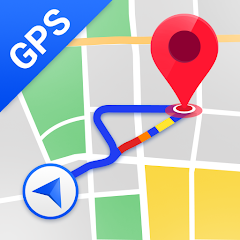Our daily lives have become significantly more reliant on GPS navigation, which makes it easier for us to travel to other areas. Trigonometry is an essential tool for accurate locating and directing us to our destinations.
In order to navigate using the GPS (Global Positioning System), trigonometry is essential. Users of the GPS satellite-based navigation system can pinpoint their exact location and move between locations.
Trilateration is a technique used by the Global Positioning System (GPS) to determine positions at or near the surface of the Earth. The phrase “trilateration” refers to the trigonometric law by which, given the lengths of all three triangle sides, the interior angles of a triangle can be calculated. This idea has been extended to three dimensions using GPS.
In GPS navigation, trigonometry is a key mathematical technique. It is utilized in numerous techniques that support precise location and navigation, including triangulation, satellite geometry analysis, distance computations, course and heading determination, and others.
This article explores how trigonometry is used in GPS navigation and highlights the key algorithms employed in the process.
Triangulation and Satellite Geometry
The triangulation principle is used by GPS receivers to determine the user’s location. The receiver determines the distances and angles between itself and the satellites by utilizing signals from several satellites. To precisely assess these distances and angles, trigonometric functions like sine, cosine, and tangent are used. Trigonometry is also used to determine the satellites’ geometric configuration, including their elevation and azimuth angles. Establishing line-of-sight communication and guaranteeing precise positioning computations are made easier with the use of this information.
Distance Calculation and Haversine Formula
Distances between GPS coordinates are determined using trigonometry. For this, many people employ the trigonometric equation known as the Haversine formula. The Haversine formula uses the law of cosines to calculate the great-circle distance between two points on the surface of the Earth using those points’ latitudes and longitudes. For measuring trip lengths, figuring out arrival times, and giving precise navigational instructions, this distance calculation is essential.
Course and Heading Calculation
The user’s heading (the direction the receiver is pointed) and course (the direction they are moving) are calculated using trigonometry. Trigonometric computations are used to estimate the change in location by comparing GPS data at different points in time. By analyzing the angles between the initial and end positions, one can determine the resulting course and heading. These calculations allow the GPS system to give users precise navigational advice.
Key Algorithms used in GPS Navigation
Time of Arrival (TOA)
The time it takes for GPS signals to travel from satellites to the receiver is used by the TOA algorithm. The receiver can calculate the distances to each satellite by carefully monitoring the elapsed times between these signals. The user’s position is then triangulated using trigonometry based on these distances.
Least Squares
The GPS positioning accuracy is increased by using the Least Squares technique. Multiple satellite measurements are taken into account, along with measurement flaws and atmospheric disturbances. The mathematical optimization procedure uses trigonometry to help the system determine the most likely user position.
Kalman Filter
Based on GPS readings and motion dynamics, the Kalman Filter method is used to estimate and anticipate the user’s position. The Kalman Filter technique makes use of trigonometric computations to model user mobility, update position predictions, and take into account GPS signal uncertainty.
The basis of GPS navigation is trigonometry, which enables precise placement and trustworthy guiding. Trigonometry enables GPS receivers to locate the user and deliver exact navigational instructions by using triangulation, distance computations, and angle analysis. Trigonometric computations are used in algorithms like TOA, Least Squares, and Kalman Filter to increase the precision and dependability of GPS navigation systems. Continuous research works to improve these algorithms and the use of trigonometry in GPS navigation as technology develops.
Swikriti Dandotia
















